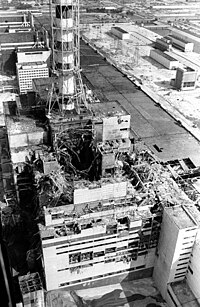
Photo from wikipedia
Current trends in disaster response and management include various stakeholders, including non-government organisations (NGOs), volunteer groups and other humanitarian organisations, working alongside governmental agencies. Together, they are directly involved in… Click to show full abstract
Current trends in disaster response and management include various stakeholders, including non-government organisations (NGOs), volunteer groups and other humanitarian organisations, working alongside governmental agencies. Together, they are directly involved in reconstruction efforts, with support often extending from the early response to long-term reconstruction. The common goal of reconstruction efforts spanning the last few decades is the ambition to “Build Back Better”. More recently, there have been efforts to expand the scope of the reconstruction efforts to “Build Back Safer” and to raise awareness about the quality and safety of the final products, such as housing and infrastructure. Disaster management studies rarely address the construction process after disasters, or the working conditions of the builders, and often pay little attention to the health and safety of the extended workforce. This study identifies critical factors affecting workers, volunteers, local communities and other staff working on disaster reconstruction projects through a systematic literature review of academic publications. A total of 35 publications were thematically analysed, reduced from an initial selection of 394 publications selected between 2004 to 2022. The findings from this study highlight the vulnerabilities experienced by workers and the broader community involved in post-disaster reconstruction and acknowledge challenges integrating health and safety concerns into the practice and governance of global humanitarian systems.
Journal Title: Sustainability
Year Published: 2023
Link to full text (if available)
Share on Social Media: Sign Up to like & get
recommendations!